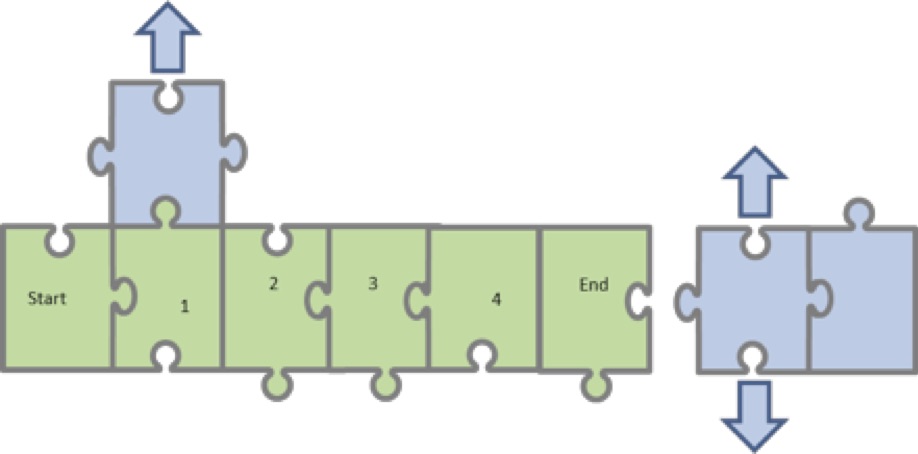Intro
Guest blog by Barry Green, CDO Hub member.
Barry will be the keynote at the next CDO Hub event in London, on 6th March 2019. He’ll be speaking about the various options for data tooling and the timing of implementation. This covers all core tools necessary for both data and information provision.
1.Background
Data ownership requires collaboration between everyone in an organisation. Data ownership is a shared responsibility with no one individual, division or executive owning data.
Given the low level of maturity of data in most organisations’ ownership should start with critical data elements (‘CDEs’). While the initial focus is on CDE’s it is important to understand that all data is important, and the principles as outlined organisations data policy should to be considered when consuming, producing, sharing or transforming data.
1.1 Roles and Responsibilities
The concept of ownership for data and process needs to be clearly defined. The below table outlines the various components of ownership, with definitions provided for additional context.
In simple terms the approach uses accountable and responsible and one other variable to provide define what is expected of an owner of process or critical data.

1.2 Key Definitions
While the implementation of ownership will evolve it is important to understand that all roles need to collaborate in order to ensure the data is managed efficiently and effectively.
1.2.1 Accountable and Responsible
For simplicity accountability and responsibility are compared to provide clarity of their use.
The main difference between responsibility and accountability is that responsibility can be shared while accountability cannot. Being accountable not only means being responsible for something but also ultimately being answerable for your actions. Also, accountability is something you hold a person to only after a task is done or not done. Responsibility can be before and/or after a task.
1.2.2 100% Committed
In this document accountable or responsible can have an additional variable one being 100% committed (refer to Figure 2).
100% committed is defined as:
Performing a duty on a “100% committed” basis is the onerous standard. If you’re accountable or responsible for performing a duty on a “100% committed” basis this means, everything that can be done should be done. For clarity this doesn’t mean taking actions that are not commercially efficient or effective. The phrase “no stone unturned” exemplifies the “100% committed” standard.
1.2.3 Reasonable Effort
By contrast, “reasonable efforts” implies that what can be done should be done, in the context and purpose of the duty being performed, but without the responsible or accountable party needing to leave “no stone unturned”. “Reasonable Efforts” is a less onerous standard than 100% committed.
1.2.4 Critical Data Owner
Critical data is identified through understanding the process that gives it context and makes it critical. The owner of critical data is required to ensure there’s a simple definition that is maintained in the business glossary.
They may also help define data quality thresholds for the data in line with customers and producers to ensure that the validity of data is appropriate. While there may be exceptions it is expected that assisting with data quality thresholds should be consistent.
1.2.5 Discrete Process Owner
A discrete process owner can be described as a someone who undertakes a function and produces something (e.g. report, output) that is used in the overall process. The activity is undertaken as part of the role of the individual or team i.e. it is their job. The reason discrete ownership is important is that assigning ownership on this basis is easier than trying to define an owner for end to end process. The approach for ownership is to identify the key process steps at a high level and assign owners to the discrete boxes.
This is shown below in Figure 3 where a process has been mapped with six key component parts. This process is coloured green.
However, like data end to end process is also contextual and for a particular context the end to process may have other activities that need to be understood. The blue coloured shapes represent the other activity that needs to be brought into scope with the arrows indicating other activity which is not understood yet.
Note as process is joined and understood more broadly the understanding of what happens in an organisation can be used to drive simplification and cost effectiveness.
The other key reason discrete ownership is important is that by understanding key breakpoints in a process and having an owner you can assign actions where the data quality thresholds are not being met i.e. the part of the process where some action is degrading data quality. This is a key part of the data management framework where data quality rules are run across a process.

1.2.6 End to End Process Owner
As mentioned above end to end process is contextual and additional effort to map process to complete an end to end process will be needed.The issue traditionally with someone being “accountable” is the implication that the individual has sole accountability and needs to manage and control everything they are accountable for.
It is not practical for an end to end owner to understand the detail of the full end to end process, as process will enviably cross multiple teams of the organisation. By having discrete owners and a model of shared responsibility for data accountability on a reasonable basis becomes manageable.
Note that the individual is still the sole person accountable, but they have a team of people to resolve issues in the process. Ergo accountability is about managing as required the discrete owners.
Where a process has been documented for a specific scope and has discrete owners. For an end to end owner to be assigned the following conditions must be adhered to:
- The process should be documented ‘end to end’ to ensure that all critical steps are understood;
- If the process being documented forms part of a larger more complex process the start and end points need to be clearly outlined, and reference made to other key processes which are impacted by the start or end of the process being documented;
- The business outcome and critical data need to be clearly identified in the process. The outcome of the documentation is to capture and understand the process and data and allow this ‘asset’ to be available a business glossary[1];
- Where an existing process has been documented and stored in the business glossary it can be referenced rather than repeated in the document;
- Sign off points need to be clearly defined and the definitions used below for the type of sign off e.g. accountable, responsible etc.;
- Data quality breakpoints need to be clearly defined to ensure that data quality rules can be run across the process. This allows for appropriate assignment to correct issues when quality thresholds are not met.
1.2.7 System Owner (Custodian)
It is important to have systems owners assigned. Technology do not own data, but they need to be identified as they are an important part in maintaining good data and enabling straight through process. This means they maintain the responsibility for ensuring that systems are current, working and supporting business process. In this role they are responsible for ensuring the system controls and systems are defined in line with business requirements on a 100% committed basis.
1.2.8 Data Consumer
Data powers our business. All users of data are required to understand their responsibilities in transacting process and using data. They have a responsibility of a reasonable basis for understanding their consumption of data.
1.2.9 Data Producer
Data powers our business. All producers of data are therefore required to understand their impact to process and business outcomes as aligned to the data policy principles and data standards. They have accountability on a 100% committed basis for what they produce.
1.2.10 Governance
The CDO and Data Governance Board in an organisation are accountable on a 100% committed basis for ensuring the right policy, strategy and standards are available for the organisation to operate effectively, enabling its business objectives to be met.
[1] A business glossary in this context is traditional one-dimensional data business glossary. For data to be useful it must have the additional context of owners, policy, systems, etc and is a tool which allows change to be undertaken more rapidly and provide a window to what and how activity is conducted for key business outcomes.
Related.
See all
Cynozure research calls for stronger data leadership in US financial firms to unlock data benefits

A CLEAR™ Path: How to Foster a Robust Data Culture by Leveraging Concepts from Industrial and Organizational Psychology

Outsmarting the Bots on demand: A practical application of machine learning




